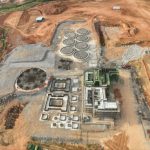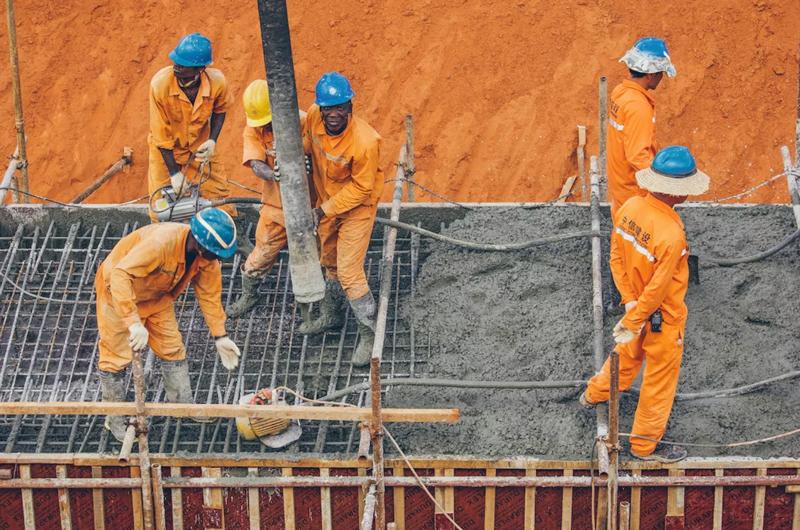The newly appointed Public Works and Infrastructure Minister, Dean Macpherson, has rightly called for a “new vision and reality” to rebuild the country’s foundation through coordinated infrastructure development to unlock new economic opportunities.
The Minister recently announced the establishment of an Infrastructure Advisory Committee, underscoring the need for strategic investments and innovative approaches to transform South Africa’s landscape and improve the lives of millions. From modernising energy grids to revitalising water systems, here’s how South Africa can map out a prosperous future where world-class, digitalised infrastructure powers economic growth and creates opportunities for all South Africans.
South Africa’s infrastructure landscape calls for change
South Africans have grappled with unreliable electricity supply, water shortages, and inefficient transportation systems. South Africa’s National Development Plan 2030 acknowledges that these are not mere inconveniences but significant barriers to economic growth and social progress. Load shedding disrupts businesses and households, while water scarcity threatens urban and rural communities.
The struggle to access clean, potable water is a daily reality for many South Africans, as evidenced by the 2023 cholera outbreaks linked to inadequate water treatment facilities.
Meanwhile, an overburdened and ageing rail network hampers the efficient movement of goods and people, increasing costs and reducing competitiveness.
However, there is cause for optimism. Minister Macpherson’s call for a coordinated approach to infrastructure development aligns perfectly with what industry experts have long advocated. By bringing together government, private sector, and civil society, we can create a synergy that addresses immediate needs and lays the groundwork for sustainable, long-term growth.
Priorities for a prosperous future
Realising this vision will require a comprehensive approach that addresses multiple facets of our infrastructure landscape. The Siemens Pictures of Transformation Report reveals that modernising and expanding our energy infrastructure lies at the heart of this transformation.
This expansion goes beyond increasing generation capacity to embrace smart grid technologies and diversify our energy mix with renewable sources. This approach will improve distribution efficiency and ensure a more reliable and sustainable power supply for all South Africans.
Underpinning all these efforts must be a commitment to leveraging digital technologies across all infrastructure sectors. The Internet of Things, artificial intelligence, and big data analytics offer unprecedented opportunities to transform how we build, manage, and maintain our infrastructure. By harnessing these technologies, we can drive greater efficiency and cost-effectiveness throughout our infrastructure ecosystem.
Transportation, particularly our rail network, demands urgent attention. Revitalising this sector requires more than just repairing existing lines; it calls for bold investments in new, high-capacity corridors capable of efficiently moving goods from production centres to ports and urban areas.
A modern, reliable rail system holds the potential to significantly reduce transportation costs, ease road congestion, and boost our export competitiveness on the global stage.
However, none of these advancements will be possible without a concurrent focus on human capital development. We must prioritise skills development and capacity building.
This means investing in training programmes and forging partnerships with educational institutions to ensure South Africans have the knowledge and expertise to build and maintain the digital infrastructure of tomorrow. By nurturing our human resources alongside our physical infrastructure, we can create a sustainable cycle of growth and innovation that will propel South Africa into a prosperous future.
The economic imperative of digital infrastructure development
These recommendations are not just theoretical. They are backed by compelling local and global evidence. The economic impact of such infrastructure investments cannot be overstated.
The Pictures of Transformation Report reveals that, by 2040, South Africa will still have an energy backlog. Enough renewable energy generation will be in vain if the infrastructure does not exist to transmit and store this energy.
Digital innovations have the potential to address complex energy supply demand problems and advances in renewable energy storage will be an economic game changer.
With sufficient energy infrastructure, South Africa could meet the energy demands of 95% of the population through on-grid and off-grid connections by 2040.
The market could total 7.5 GW of installed capacity by 2035. In addition, the mobility sector will be boosted by substantial electrical energy generation and other alternative forms of fuel such as hydrogen.
Technological interventions, new innovation and multisectoral collaborations are critical and can lead to a boom in digital infrastructure, connected mega cities and better municipal infrastructure. Digital transparency could overhaul municipal trading services and infrastructure management.
For instance, digital solutions will make services such as proper rail signalling more effective and efficient and will reduce non-revenue services to improve the health of the public purse.
South Africa’s rail and air freight volumes could more than double by 2040. Equally critical is the overhaul and expansion of our water infrastructure. This encompassing task involves upgrading treatment plants, implementing cutting-edge leak detection systems, and investing in innovative water management technologies.
Developing the country’s water infrastructure will help guarantee universal access to clean, safe water while promoting conservation and recycling practices that safeguard this precious resource for future generations.
In the energy sector, a recent project in the Eastern Cape introduced an independent microgrid in the remote village of Upper Blinkwater. This system now provides electricity to 70 homes, delivering enough power for essential needs such as mobile phone charging, television, and appliances.
The project also supports communal facilities, including shared washing machines, further enhancing the community’s quality of life.
Additionally, a clean water project employing advanced leak detection systems addressed combined sewage systems in Yorkshire Water’s waterways overflowing untreated water during heavy rainfall. This novel approach has shown immense success in a trial involving 70 sites across the region, providing up to two weeks advance notice of blockages.
Adopting innovative approaches to fund the future
While public funding will play a crucial role, it’s clear that new funding models and private sector participation will be essential. Public-private partnerships (PPPs) offer a promising avenue to pool resources, expertise, and innovation.
These partnerships can help bridge the funding gap, accelerate project delivery, and ensure long-term sustainability.
Moreover, exploring innovative financing mechanisms, such as green bonds and infrastructure funds, can help attract domestic and international investment. By creating a conducive environment for private sector involvement and ensuring transparency and accountability, South Africa can unlock the capital needed to fuel its infrastructure renaissance.
Uniting to build a vision of a thriving South Africa
As Minister Macpherson rightly points out, we must transform South Africa into a “massive construction site.” Achieving this will require all stakeholders – government, private sector, civil society, and ordinary citizens – to unite in a spirit of collaboration and shared purpose. We must pool our resources, expertise, and innovative ideas to overcome the challenges that have held us back for too long.
The road ahead may be challenging, but the destination is clear – a South Africa with world-class infrastructure that powers economic growth, enhances the quality of life and creates opportunities for all its citizens.
As industry leaders, we can heed the Minister’s call by working together to realize South Africa’s infrastructure vision and build a brighter future for all South Africans.















